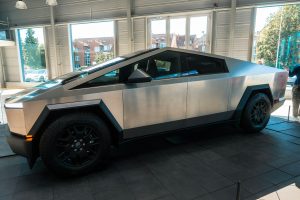How Do Electric Cars Generate Power Without Gas?
Electric vehicles (EVs) operate on the principle of harnessing electrical energy stored in a battery to power an electric motor. This is in stark contrast to conventional gasoline-powered vehicles that rely on combustion engines fueled by gasoline. At the heart of an electric car’s functionality is its ability to generate power without the need for gas. This transition from traditional gasoline engines to electric motors is not only a leap towards innovation but also a step towards sustainability. Let’s dive deeper into how electric cars generate power, the technology behind them, and what the future holds for this groundbreaking mode of transportation.
Essence of Electric Cars
Electric cars use a large battery pack to store energy, which is then used to power an electric motor that drives the vehicle. The electric motor works by converting electrical energy from the battery into mechanical energy to propel the vehicle forward. This process eliminates the need for traditional combustion engines and reduces carbon emissions, making electric cars a greener and more sustainable transportation option.
The Battery Pack
The central component of an electric vehicle is its battery pack. These battery packs are typically composed of thousands of individual lithium-ion cells, similar to those found in your smartphone but on a much larger scale. They are designed to store a significant amount of energy, which is crucial for providing an extended driving range. The capacity of a battery is measured in kilowatt-hours (kWh), and a higher kWh rating usually means a longer distance can be traveled on a single charge.
For example, the Tesla Model S Long Range boasts a battery capacity of approximately 100 kWh, allowing it to travel over 370 miles on a single charge under optimal conditions. This is made possible by advances in battery technology, which continuously aims to increase energy density, reduce weight, and improve safety.
How the Electric Motor Works
The electric motor in an EV converts the stored electrical energy into mechanical energy to drive the vehicle. Unlike combustion engines, electric motors deliver peak torque instantly, which means EVs can accelerate more quickly from a standstill. This characteristic not only enhances performance but also contributes to a more dynamic driving experience.
Moreover, electric motors are highly efficient, often converting over 90% of the electrical energy from the battery into movement, compared to internal combustion engines, which typically convert only about 20-30% of the energy from gasoline into motion. This efficiency translates to lower operational costs and reduced environmental impact.
The Role of the Power Inverter
Power inverters play a critical role in electric cars by converting the direct current (DC) stored in the battery into alternating current (AC) required by the electric motor. This conversion process ensures that the electric motor can effectively utilize the energy stored in the battery to drive the vehicle.
How Inverters Enhance Performance
Inverters not only convert DC to AC but also play a crucial role in controlling the speed and torque of the electric motor by adjusting the frequency and amplitude of the AC power supplied. This is akin to having a sophisticated transmission system in a traditional vehicle, but with a much smoother and more precise control.
For instance, when you press the accelerator pedal in an EV, the inverter adjusts the electrical output to increase the motor’s speed, providing seamless acceleration. This precise control is what gives electric cars their characteristic smooth and often silent ride.
Voltage Regulation
The power inverter also helps regulate the voltage and frequency of the electricity supplied to the motor, optimizing its performance and efficiency. By ensuring the motor receives the correct voltage, the inverter protects the motor from potential damage and enhances its longevity. Without the power inverter, electric cars would not be able to convert and utilize the energy stored in the batteries effectively, highlighting its essential role in the functionality of electric vehicles.
Regenerative Braking System
Electric cars are equipped with a regenerative braking system that enables the vehicle to recapture energy during braking. When the driver applies the brakes, the electric motor works in reverse mode to generate electricity, which is then fed back into the battery for storage and reuse.
Benefits of Regenerative Braking
This innovative system not only improves the overall efficiency of the vehicle by recycling energy that would have been wasted during braking but also helps extend the driving range of electric cars. By capturing and storing this regenerative energy, electric vehicles can enhance their performance and reduce their reliance on external charging sources, contributing to a more sustainable mode of transportation.
For example, in city driving conditions where frequent stops are common, regenerative braking can significantly improve the efficiency of an EV. Drivers often find that their vehicles can travel further on a single charge when utilizing regenerative braking effectively.
Practical Tips for Maximizing Regeneration
To maximize the benefits of regenerative braking, drivers can adopt certain practices:
- Anticipate Stops: By anticipating traffic lights and gradual stops, drivers can maximize the energy recovered during braking.
- Use One-Pedal Driving: Many EVs offer a one-pedal driving mode that enhances regeneration by increasing the braking effect when the accelerator is released.
- Monitor Regeneration Levels: Some vehicles provide feedback on regeneration levels, allowing drivers to adjust their driving habits to optimize energy recovery.
Charging the Battery
To replenish the energy stored in the battery of an electric car, owners have the option of charging at home using a domestic power outlet or utilizing public charging stations. These charging options provide a convenient and eco-friendly alternative to traditional gasoline refueling.
Home Charging
Home charging allows EV owners to top up their batteries overnight, ensuring they start each day with a full charge. This can be done using a standard household outlet, often referred to as Level 1 charging, or with a dedicated home charging station, known as Level 2 charging, which provides faster charging times.
For instance, a Level 1 charger might replenish about 4 miles of range per hour of charging, while a Level 2 charger can provide around 25 miles per hour. Many EV owners opt for a Level 2 home charger for its convenience and efficiency.
Public Charging Infrastructure
Public charging stations offer flexibility for longer journeys or when on the go. They are broadly categorized into three levels:
- Level 1: Basic charging using a standard outlet; slowest option, mostly for emergency use.
- Level 2: Commonly found in public locations like shopping centers and parking lots; provides a quicker charge.
- DC Fast Charging: Found along highways and major routes; can charge an EV up to 80% in as little as 30 minutes.
With the increasing number of charging stations nationwide, planning long-distance trips in an electric car has become more feasible. Apps and navigation systems now integrate charging station locations, helping drivers plan their journeys effectively.
Fast-Charging Technology
Advancements in fast-charging technology are continuously expanding, reducing charging times and further enhancing the practicality of electric vehicles for everyday use. Fast chargers use high-voltage DC power to quickly charge an EV’s battery. While not all EVs are compatible with every fast charger due to differences in connector types and power outputs, standardized systems are emerging to address these challenges.
Future Innovations and Advancements
As technology continues to evolve, researchers and automakers are exploring new ways to enhance the efficiency and performance of electric cars. This includes advancements in battery technology, charging infrastructure, and overall design to make electric vehicles more accessible and attractive to consumers.
Battery Technology Breakthroughs
Future innovations may include improved battery capacities, faster charging capabilities, enhanced range, and smarter connectivity features. Solid-state batteries, for instance, are on the horizon and promise to offer higher energy densities, faster charging times, and increased safety due to their non-flammable nature.
Smart Connectivity and Integration
The integration of smart technology is another area where electric vehicles are rapidly evolving. Features such as over-the-air updates, smart home integration, and advanced driver-assistance systems (ADAS) are becoming standard. These technologies not only enhance the user experience but also improve safety and convenience.
Sustainable Manufacturing Practices
In addition to technological advancements, the manufacturing process of electric vehicles is becoming more sustainable. Automakers are focusing on reducing the carbon footprint of production through the use of renewable energy, recycling of materials, and ethical sourcing of components.
The Role of Policy and Incentives
Government policies and incentives play a significant role in promoting electric vehicle adoption. Tax credits, rebates, and subsidies can make EVs more affordable for consumers, while investments in charging infrastructure further support widespread adoption.
Overcoming Challenges
Despite the promising future, electric vehicles face challenges that need addressing. Common concerns include:
- Range Anxiety: Fear of running out of charge before reaching a destination. However, with increasing range capabilities and charging infrastructure, this is gradually becoming less of a concern.
- Initial Cost: While the upfront cost of EVs can be higher than traditional cars, the total cost of ownership is often lower due to savings on fuel, maintenance, and tax incentives.
- Charging Infrastructure: Although improving, charging infrastructure is still not as ubiquitous as gas stations, particularly in rural areas.
By continuing to push the boundaries of electric vehicle technology, the industry aims to accelerate the adoption of EVs worldwide, ushering in a new era of sustainable and eco-friendly transportation for the future.



